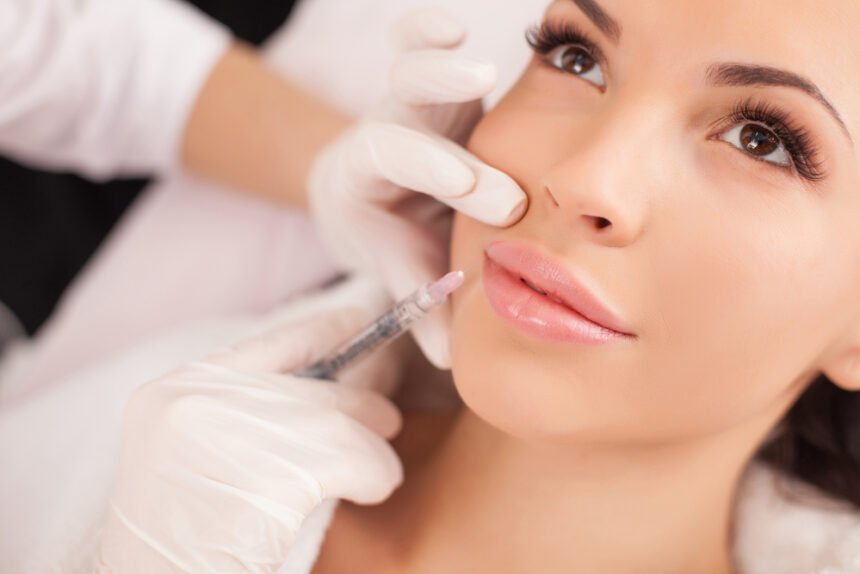Botox injections constitute a solid alternative to plastic surgeries. While being substantially less invasive, they provide a patient with an effective reduction of age-related issues.
However, the result of Botox is not permanent and fades away with time. So, how long does it take for it to wear off? Let us figure it out together by means of going through the below-mentioned information.
Buy Botox Online Advantageously
If you would like to order Botox online, check out what DKderma offers. While being an experienced supplier of pharmaceutical products, it provides its customers with:
- A wide assortment of medical and cosmetic injectables;
- Fast delivery in reliable packaging;
- Advantageous prices.
Botox belongs to prescription medicine. Therefore, only certified health care providers with medical education are eligible to buy and use it.
So, click here to buy Botox online and let your clients take advantage of its long-lasting result!
A Few Words on the Botox Treatment
Above anything else, it is essential to check out the most important information about Botox. So, how about defining it and its main effects right away?
What Is Botox?
Botox is a brand of medical and cosmetic injectables. It is manufactured by a global pharmaceutical company Allergan and therefore stands side by side with Juvederm, CoolSculpting, and other products.
While being based on botulinum toxin, Botox has the power to temporarily relax the body and facial muscles by means of blocking a patient’s nerve signals (primarily the ones that cause muscle contraction).
Botulinum toxin is a substance that is produced by the bacterium of Clostridium botulinum. Its power to affect muscles might be life-threatening and useful at the same time. On the one hand, it has the potential to cause a dangerous disease called botulism. On the other hand, however, botulinum toxin is effectively applied for a variety of medical and cosmetic indications.
What Are Botox Results?
Botox is one of the most efficient muscle relaxants available on the market these days. Therefore, it is an effective method to take care of different medical and aesthetic issues.
Among the key medical results of Botox are:
- The treatment of neck pain;
- The reduction of urinary incontinence caused by an overactive bladder or loss of bladder control;
- The improvement of the lazy eye condition;
- And the therapy for various other muscle or nerve conditions.
The Botox cosmetic results, in their turn, include:
- The treatment of dynamic skin depressions (especially moderate to severe forehead lines or crow’s feet);
- The overall rejuvenation of the neck;
- The reduction of lip lines;
- And so on.
Botox therapy is suitable to treat frown lines, smile folds, and other dynamic wrinkles. However, it is not going to help a patient who needs to take care of static skin depressions that are primarily indicated for dermal filler injections.
So, Botox is a botulinum toxin product that might provide patients with a profound improvement of their muscle-related health condition and an overall rejuvenation of their skin.
What Are the Side Effects of Botox?
In some cases, both children and adult patients treated with medical Botox injections might experience one of the following side effects:
- General muscle weakness (or, as it is also called, all-over-muscle weakness);
- Difficulty breathing or trouble swallowing;
- Urinary tract infection;
- And so on.
As well, some patients might even develop urinary retention as a result of Botox injected into their skin or muscles.
While the administration of Botox for cosmetic purposes, in its turn, might lead to an increased risk of:
- Abnormal facial change;
- Local skin infection or irritation;
- Inability to make certain facial expressions;
- And so on.
In some cases, patients might also start experiencing allergic reactions after the injection of Botox.
Under normal circumstances, such side effects of Botox as overall muscle weakness or skin irritation tend to disappear on their own within several days after the procedure. However, such serious symptoms as difficulty swallowing or urinary tract infection might require prompt medical therapy.
To prevent the appearance of the above-mentioned complications, patients treated with Botox need to let health care practitioners investigate their current health condition and inform them about all the medicines (like antibiotics, blood thinners, sleep medicine pills, or cold medicine products) or herbal supplements they are taking.
About the Duration of Botox Result in a Nutshell
Botox injections belong to durable but nevertheless temporary procedures. In other words, their results are not permanent as they fade away with time. Thus, let us define the approximate duration of Botox and figure out the way it wears off.
How Long Does Botox Last?
The duration of Botox injections depends on many factors, starting from the number of units (U) that were administered into a patient’s body and ending with such individual peculiarities of a patient as their:
- Current health condition;
- Age;
- Skin type;
- Habits;
- Lifestyle;
- And so on.
On average, the human body needs up to six months to process Botox via chemical processes. However, this duration is highly personal and might vary from one patient to another.
What Happens to Botox After It Wears Off?
Due to the fact that Botox gradually wears off with time, let us take a look at the way it happens. Here is how it works:
- After being injected intramuscularly into a patient’s body, the botulinum toxin relaxes a patient’s muscles and, therefore, reduces the appearance of dynamic wrinkles (such as severe frown lines);
- As time passes, botulinum toxin gets affected by different chemical processes within the body. Thus, it breaks down into amino acid particles;
- These amino acids, in their turn, either leave the body by means of being regarded as “waste” or get recycled by the kidney in a harmless way.
This way, the human body makes Botox eventually stop working and gradually gets rid of it.
In order to prolong the presence of botulinum toxin within the body and prevent it from wearing off, a patient might undergo a further injection of Botox several months after the initial procedure.









